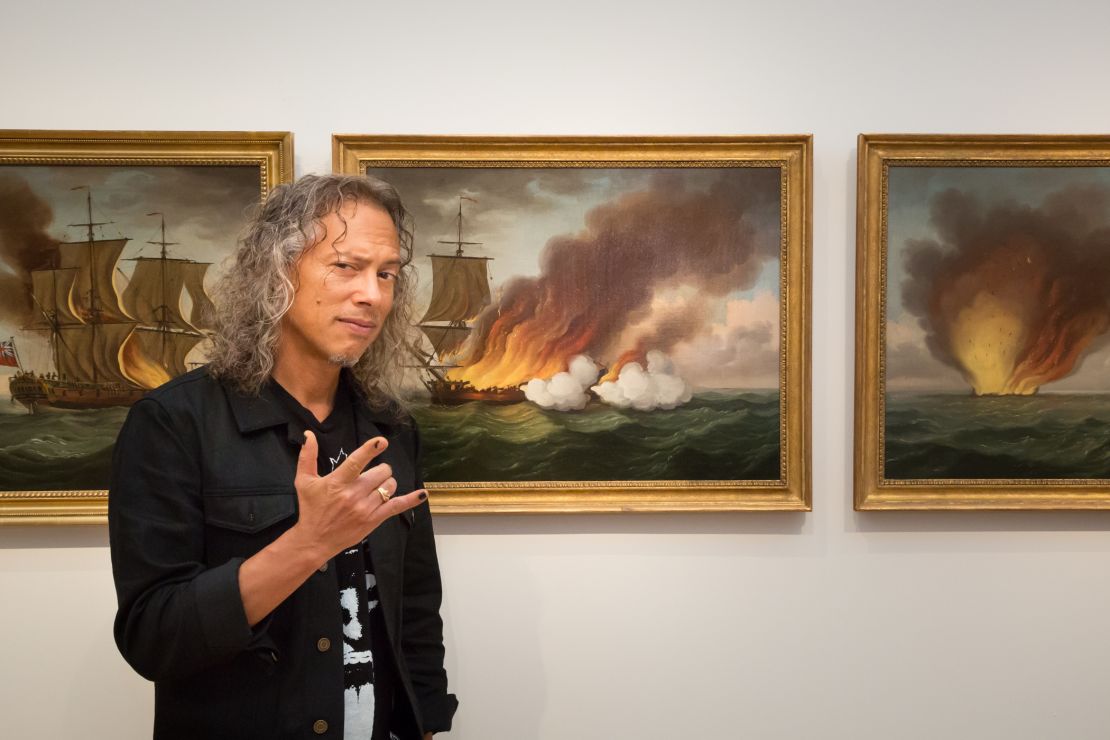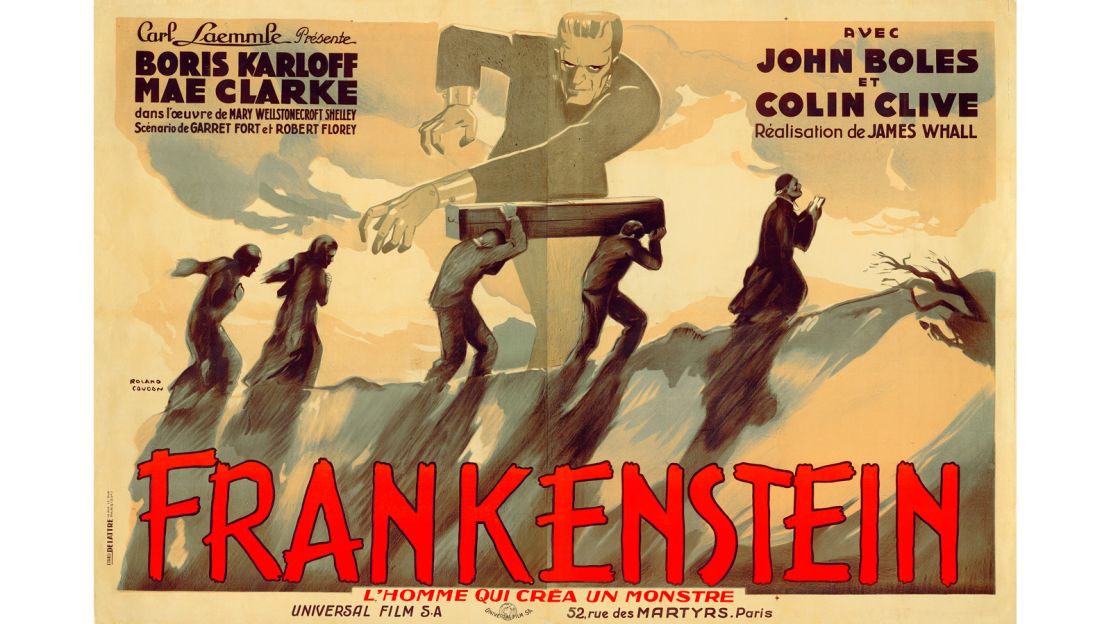The worlds of horror films, science fiction and heavy metal have always shared a set of thematic and aesthetic similarities – blood, space, screams, monsters. Countless heavy bands from Slayer to System of a Down have been influenced by the books of William Gibson, Wes Craven, Clive Barker and Dario Argento, and schlock metal icon Rob Zombie has even directed several horror movies himself, including a remake of the classic “Halloween.”
Following in this long tradition comes an enormous display of horror and sci-fi movie posters at the Peabody Essex Museum in Salem, Massachusetts, on loan from Metallica guitarist Kirk Hammett.
Spanning nearly 50 years, the show brings us into the personal obsession of a guitar hero and reveals some of the fears and illicit desires of the American public in the 20th century, shedding light on what scares us and why. Curator Daniel Finamore explains:
CNN: How did Kirk Hammett come to own such an incredible collection?
Daniel Finamore: The objects come from a wide range of sources, but nobody really collected them until fairly recent times, so there’s no traditional archive of this material. They were mostly thrown away. Some of these posters are much rarer than one might expect them to be … They were produced by the thousand, but that doesn’t mean that thousands survive.

They’ve turned up in all sorts of places unexpectedly. In one famous example, Kirk has a three-sheet poster for “Frankenstein,” produced in 1931, and it’s the only surviving example. It was found in a projection booth that had been boarded up when they were remodeling the theater … It hadn’t been mounted since the ’30s.
Who are the artists behind these posters?
American movie posters are almost entirely anonymous. The artists were never allowed to sign their work. Some European posters are signed because the tradition of poster art is considered more credible there. Some of the classics, which are such wonderful works with such skilled lithography … we have no idea who made them.
What do these posters tell us about the fears of American society?
It definitely changes over the course of time. Each era had a different source of fear. In the earlier years, it was much less based in horror from outside our known world. The stories originated with a sense of romance … The engagement was more based in having empathy with the monster, rather than fear of it. It was more based in a terror within humanity …”How could we treat the monster that way?”
After WWII and the atomic bomb, aliens are suddenly invading from outer space. People were much more aware of our place in the cosmos. We also have a section on the changing role of women in these films, whether they’re helpless victims in the jaws of giant spiders or wherever they’re more aggressive, like in “Barbarella.”
Then we close the show with a section on zombies, which everyone knows are in ascendance on film and TV … Why that is is anyone’s guess.

Are the posters sometimes better than the actual films? Is there a sense that they were doing things that cinema couldn’t at the time?
For most periods, the films and the posters match each other in terms of impact, but there is a nadir in the ’50s and early ‘60s when there are a lot of very low budget sci-fi films that had very effective, wonderful, evocative posters. You’d see one of the posters and have to go see the film … and invariably be disappointed.
People who were involved in the production of those films have said things to the effect of “Getting people into the theater was the only goal.” These films were made as date films and it was said that if you were still watching the film 20 minutes into your date, it was not a successful date.
This was not high art … In fact, there was one interview with a film producer from that era who said that they used to pour all their energy into creating these posters and shop the films around using the posters as promotional material. If they had enough interest from the theaters, then they would go out and shoot the film.
The film was really an afterthought. They didn’t even have a screenplay written. It was all based around the poster.
“It’s Alive! Classic Horror and Sci-Fi Art from the Kirk Hammett Collection” is on at the Peabody Essex Museum in Salem, Massachusetts, is on from Aug. 12 to Nov. 26, 2017.









